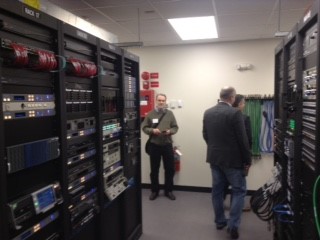Innovation, Infrastructure, and Digital Learning
Notes from the webinar:
What is Digital Learning
Technology is a metaphor for change, it is also a metaphor for risk
technology is a means of uncertainly reduction that is made possible by the cause-effect relationship upon which the technology is based.
technology innovation creates a kind of uncertainty in the minds of potential adopters as well as represent an opportunity for reduced uncertainty.
The Diffusion of Innovations: https://en.wikipedia.org/wiki/Diffusion_of_innovations
https://web.stanford.edu/class/symbsys205/Diffusion%20of%20Innovations.htm
technology is disruptive
- issues and impacts | response
- organizational practice and process | denial, anger
- individual behaviors and preferences | bargaining
- visualization: can I see me/us doing that | depression, acceptance
as per https://www.amazon.com/Death-Dying-Doctors-Nurses-Families/dp/1476775540
The key campus tech issues are no longer about IT (in the past e.g.: MS versus Apple). IT is the “easy part” of technology on campus. The challenges: people, planning policy, programs, priorities, silos, egos, and IT entitlements
How do we make Digital Learning compelling and safe for the faculty? provide evidence of impact, support, recognition and reward for faculty; communicate about effectiveness of and need for IT resources.
technology is not capital cost, it is operational cost. reoccurring.
Visualization:
underlying issues; can i do this? why should i do this? evidence of benefit?
the more things change, the more things stay the same. new equilibrium.
change: from what did you do wrong to how do we do better. Use data as a resources, not as a weapon. there is a fear of trying, because there is no recognition or reward
Machiavelli: 1. concentrate your efforts 2. pick your issues carefully, know when to fight 3. know the history 4. build coalitions 5. set modest goals – and realistic 6. leverage the value of data (use it as resource not weapon) 7. anticipate personnel turnover 8. set deadlines for decisions
Colleagues,
We apologize for the short notice, but wanted to make you aware of the following opportunity: provide
From Ken Graetz at Winona State University:
As part of our Digital Faculty Fellows Program at WSU, Dr. Kenneth C. Green will be speaking this Thursday, March 22nd in Stark 103 Miller Auditorium from 11:30 to 12:30 on “Innovation, Infrastructure, and Digital Learning.” We will be streaming Casey’s talk using Skype Meeting Broadcast and you can join as a guest using the following link: Join the presentation. This will allow you to see and hear his presentation, as well as post moderated questions. By way of a teaser, here is a recent quote from Dr. Green’s blog, DigitalTweed, published by Inside Higher Ed:
“If trustees, presidents, provosts, deans, and department chairs really want to address the fear of trying and foster innovation in instruction, then they have to recognize that infrastructure fosters innovation. And infrastructure, in the context of technology and instruction, involves more than just computer hardware, software, digital projectors in classrooms, learning management systems, and campus web sites. The technology is actually the easy part. The real challenges involve a commitment to research about the impact of innovation in instruction, and recognition and reward for those faculty who would like to pursue innovation in their instructional activities.”
Dr. Green is the founding director of The Campus Computing Project, the largest continuing study of the role of digital learning and information technology in American colleges and universities. Campus Computing is widely cited as a definitive source for data, information, and insight about IT planning and policy issues affecting higher education. Dr. Green also serves as the director, moderator, and co-producer of TO A DEGREE, the postsecondary success podcast of the Bill & Melinda Gates Foundation. He is the author or editor of some 20 books and published research reports and more than 100 articles and commentaries that have appeared in academic journals and professional publications. In 2002, Dr. Green received the first EDUCAUSE Award for Leadership in Public Policy and Practice. The EDUCAUSE award cites his work in creating The Campus Computing Project and recognizes his, “prominence in the arena of national and international technology agendas, and the linking of higher education to those agendas.”
Casey’s most recent TO A DEGREE podcasts are available now: Presidential Leadership in Challenging Times and Online’s Bottom Line.
Hope to see some of you online and please forward this invitation to anyone who might be interested.
Ken Graetz, PhD, Director of Teaching, Learning, and Technology Services, Winona State University, 507-429-3270









